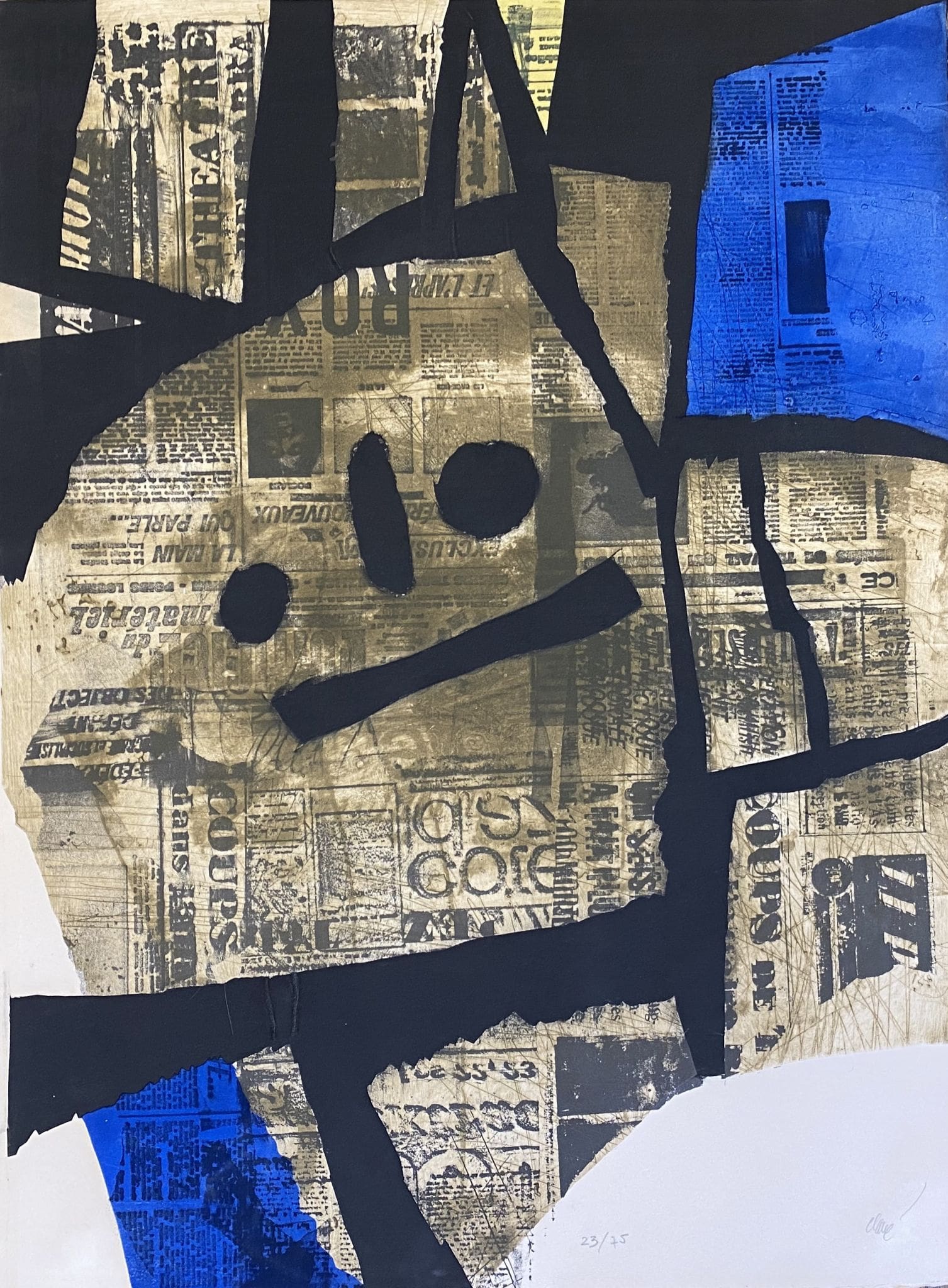Antoni Clavé
Antoni Clavé was born in Barcelona on 5 April 1913.
From 1926 he attended evening courses at the Escuela de Artes y Oficios ‘Llotja’ taught by Félix Mestres,
Josep Mongrell and Angel Ferrant. Mongrell found Clavé a place as a house painter’s apprentice in 1927 because Clavé was fascinated by the hands-on side of painting and especially by the materials used for such work and wanted to learn how to prepare paints.
In 1932 Clavé stopped attending the evening classes and, on the recommendation of Illescas, an architect, was employed at the firm of Cinaes, where he designed the weekly cinema posters. On the side Clavé also worked for a children’s magazine and designed advertising posters.
During the Spanish Civil War Clavé served as a draughtsman for the Republican government but at the end of the war he fled to France. After internment at Les Haras camp in Perpignan, Clavé settled in Paris in 1939, drawing comics and working as an illustrator.
During the 1940s Clavé’s painting showed the stylistic influence of Bonnard, Vuillard, Rouault and especially Picasso, with whom he became acquainted in 1944. Clavé’s motifs at the time were scenes of tranquil domesticity tinged with melancholy, puppet-like female figures, children, clowns and harlequins. From 1946 Clavé did numerous designs for ballet and theatre in Paris, Munich, London and New York; in the 1950s he turned to book illustration.
In 1954 Clavé ceased working as a stage-set designer and illustrator to devote himself entirely to painting, visiting Spain again. His paintings became more abstract and enigmatic; inspired by wall textures and graffiti, Clavé began integrating scraps of newspaper and other similar materials into his painting in a collage-like manner.
In 1957 Clavé embarked on designing carpets and from 1960 he also did sculpture. Clavé’s work in the latter field includes bas reliefs, assemblages and totem-like sculptures of wood and modelled or imprinted lead, some of them incorporating objets trouvé, that are archaic in feeling.
In 1965 Clavé moved to the South of France, near Saint-Tropez. Clavé’s paintings became darker, many of them almost entirely black, and he used mixed techniques. The early 1980s saw the Clavé series ‘Hommage à Picasso’, followed by a series inspired by urban living in New York, which Clavé visited in 1972 and 1989.
After one-man shows in museums and galleries in Zurich, Barcelona, Paris and Tokyo, Clavé was given a comprehensive retrospective at the Centre Pompidou Musée d’Art Moderne in Paris in 1978. The Spanish pavilion at the 1984 Venice Biennale was dedicated to Antoni Clavé.
He passed away in 2005.


































